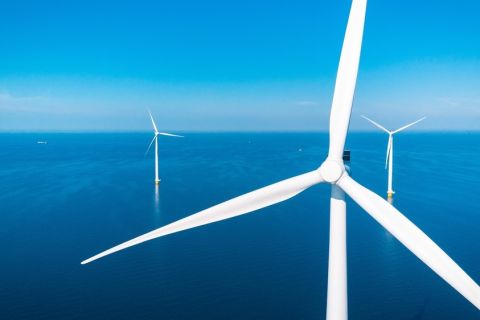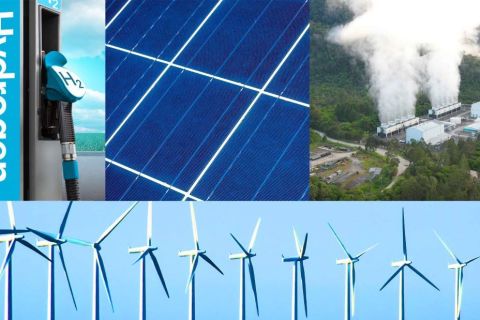
Environmentalists say that if the Biden administration is to live up to its pledge to cut methane emissions by 30% by 2030—the centerpiece of its platform at last year’s COP26 climate talks—the current proposal is not enough. (Source: Shutterstock.com)
Concerns over flaws in President Joe Biden’s methane crackdown have shot back into the spotlight after a new study suggested that a blind spot in the administration’s proposals could be significantly worse than realized.
A paper published in the journal Nature Communications last week found that smaller wells not subject to regular inspections under new regulations account for about 50% of all methane emissions from oil and gas production.
“It’s much worse than perhaps EPA previously thought,” said Jon Goldstein, the Environmental Defense Fund’s (EDF) senior director for regulatory and legislative affairs.
“Showing that half of the problem comes from these smaller wells I think underlines the importance of getting them included in frequent inspections,” Goldstein told the Financial Times.
The study comes at an inopportune time for the administration. Just this week it went on the offensive to promote its climate achievements after criticism that the president had failed to deliver on key promises and reports that key officials were on the brink of quitting.
Biden has touted efforts to target methane emissions as an example of tangible progress on climate, even as a congressional logjam leaves much of his green plans in limbo. After reinstating Obama-era regulations of the potent greenhouse gas, the administration has directed the Environmental Protection Agency to formulate a new rule that would tighten requirements for oil and gas producers to find and plug leaks.
But the proposal has come under fire for excluding smaller wells—those deemed to produce less than three tonnes of methane a year—from regular inspections. Environmental groups argue that the rules are too lenient because, on aggregate, these wells are responsible for a significant chunk of emissions. A host of asset managers have taken a similar position.
This latest study investigated wells that produce less than 15 boe/d—which the authors said broadly correlated with those wells emitting 3 tonnes per annum of methane—and found that they made up just 6% of oil and gas production but emit methane at between six and 12 times the national average. The finding that these so-called “marginal” sites contribute as much as half of wellhead methane emissions is higher than the 43% previously estimated—which had already prompted concerns.
According to the EPA, the new rule would cut methane emissions by 41million tonnes from 2023 to 2035, the equivalent of 920 million tonnes of CO₂—and more than total emissions from all U.S. passenger cars and commercial aircraft in 2019. The agency is weighing up comments on the proposal as it formulates a final version, and said it would take the study into account.
“EPA received the information contained in the Nature article during the public comment period on the November proposal,” a spokesperson said. “We are considering that, along with all other comments we received, as we develop a supplemental proposal, which the agency expects to issue later this year.”
Still, environmentalists say that if the administration is to live up to its pledge to cut methane emissions by 30% by 2030—the centerpiece of its platform at last year’s COP26 climate talks—the current proposal is not enough.
“The EPA proposal is an important step forward by the agency,” said Rosalie Winn, senior attorney at EDF. “But based on this study, we’re leaving a big chunk of potential emissions reductions on the table if EPA doesn’t comprehensively require inspections and fixing of leaks at smaller sites.”
This article is an excerpt of Energy Source, a twice-weekly energy newsletter from the Financial Times.
Recommended Reading
Winded: Ørsted Books More Impairments, Delays US Offshore Project
2024-08-15 - Danish offshore wind developer Ørsted booked about $574 million in impairments and scrapped a green fuels project in Europe.
Energy Transition in Motion (Week of Nov. 1, 2024)
2024-11-01 - Here is a look at some of this week’s renewable energy news, including progress on the largest U.S. offshore wind project being developed.
Dominion Energy, Stonepeak Close $2.6B Offshore Wind Deal
2024-10-23 - The close marked the completion of Dominion’s business review targeting $21 billion of debt reduction initiatives.
Equinor, Dominion Place Winning Bids in US Offshore Wind Sale
2024-08-14 - The offshore wind lease sale for two areas in the Central Atlantic brought in nearly $93 million, according to the U.S. Bureau of Ocean Energy Management.
Energy Transition in Motion (Week of Sept. 27, 2024)
2024-09-27 - Here is a look at some of this week’s renewable energy news, including a commitment of more than $116 billion annually in renewables and grids.
Comments
Add new comment
This conversation is moderated according to Hart Energy community rules. Please read the rules before joining the discussion. If you’re experiencing any technical problems, please contact our customer care team.





